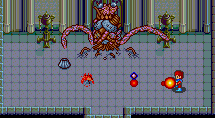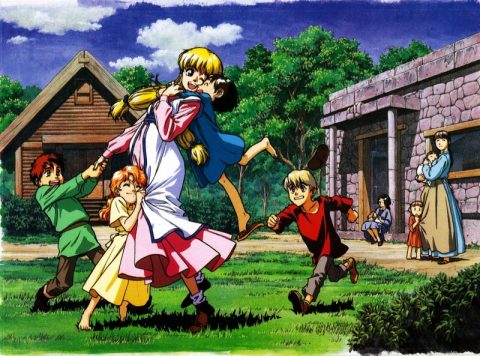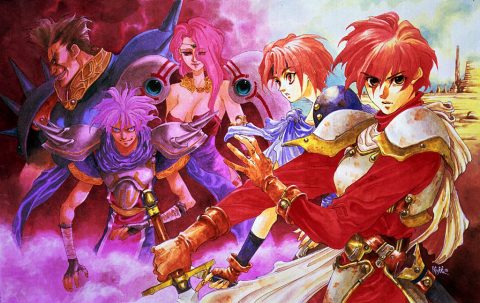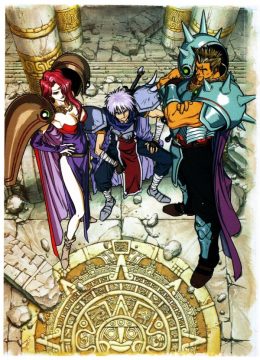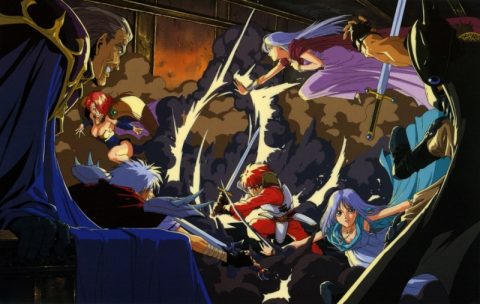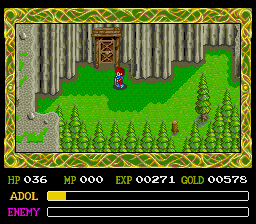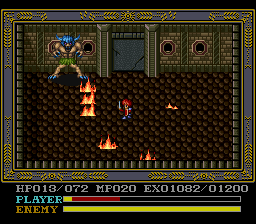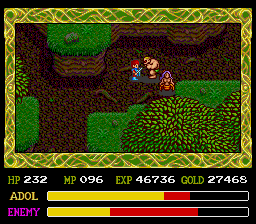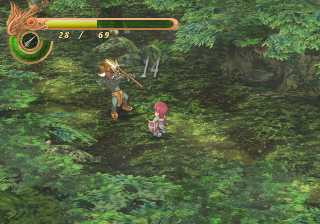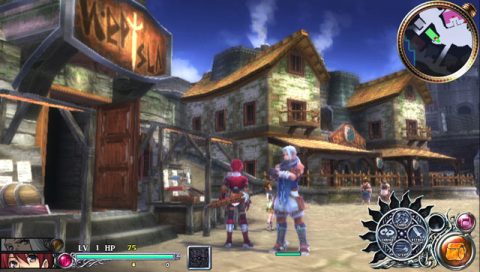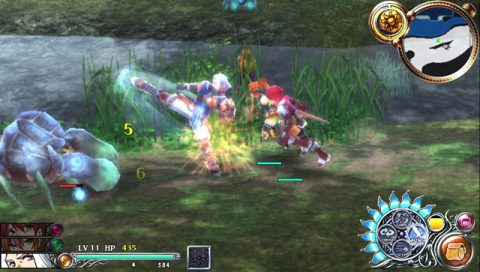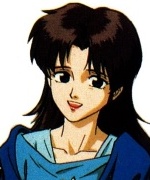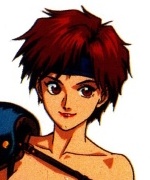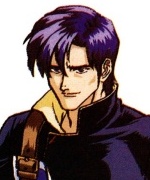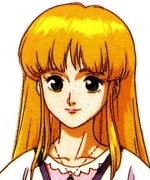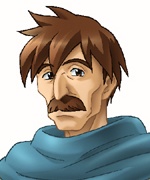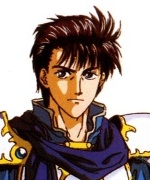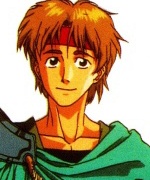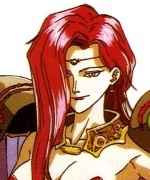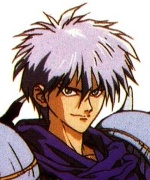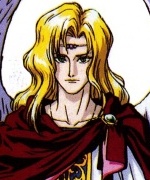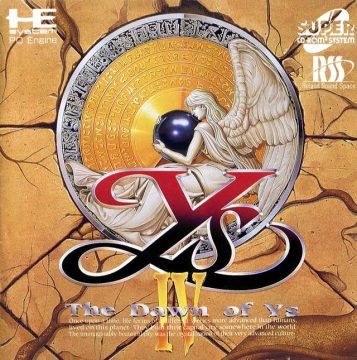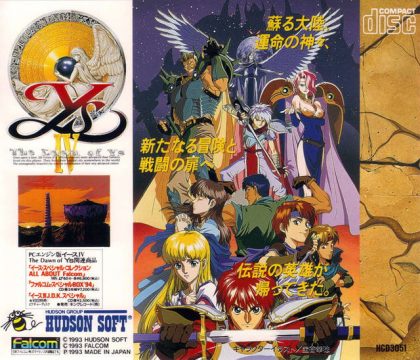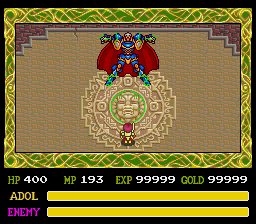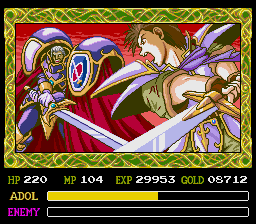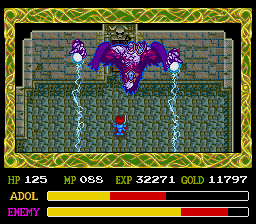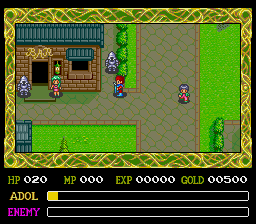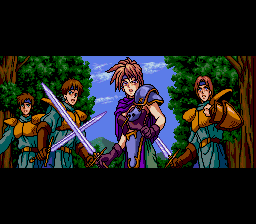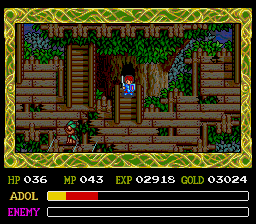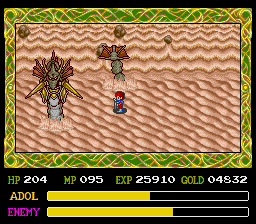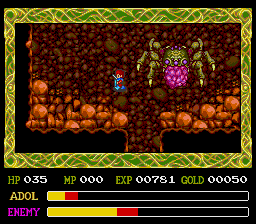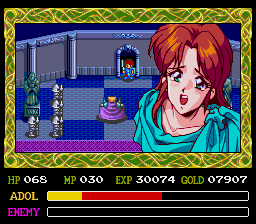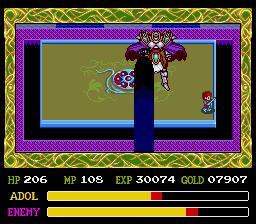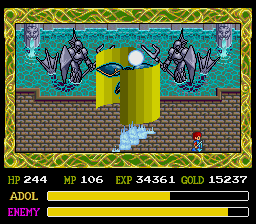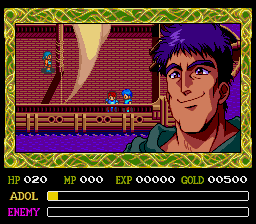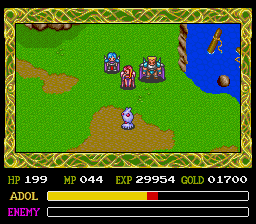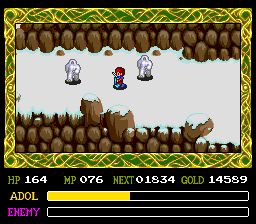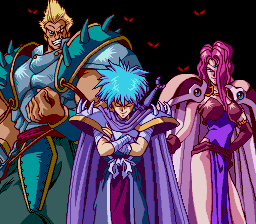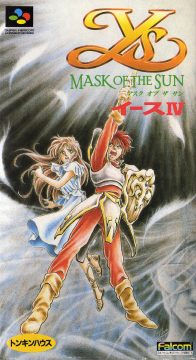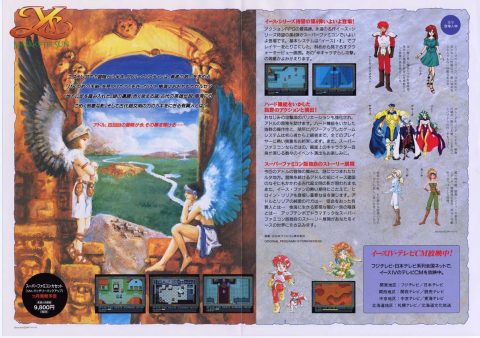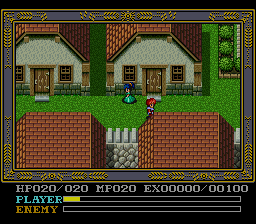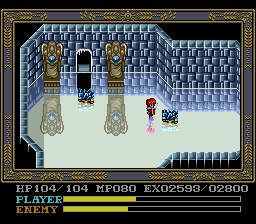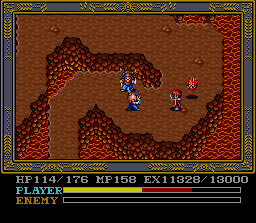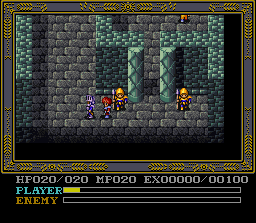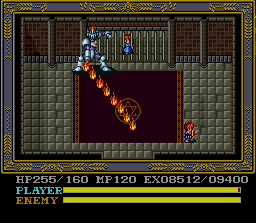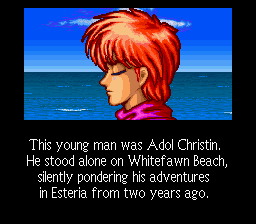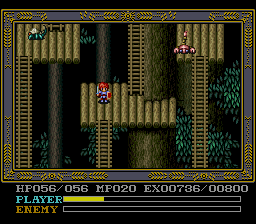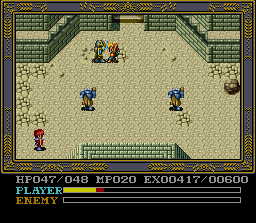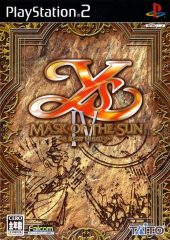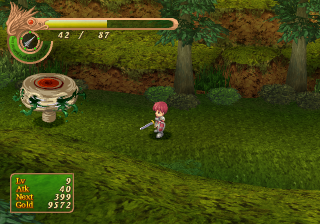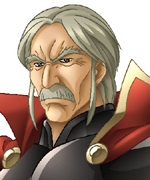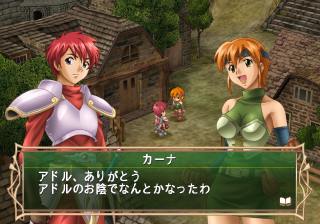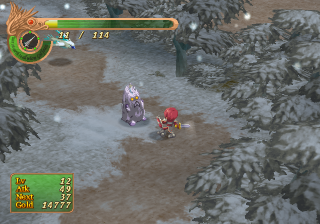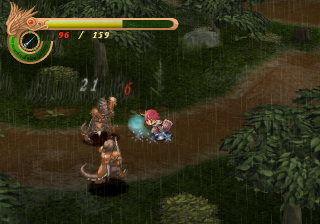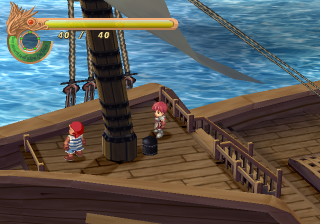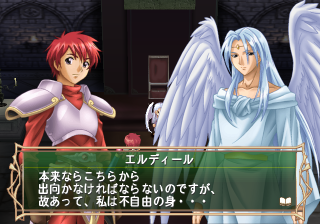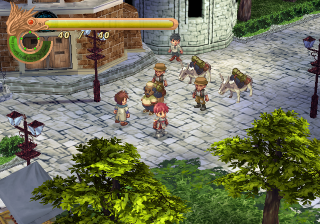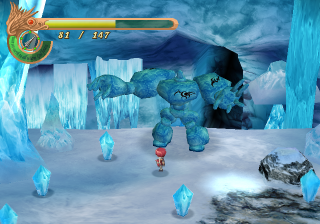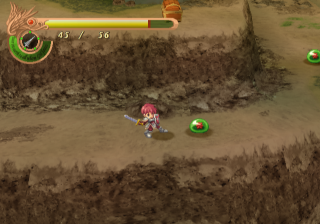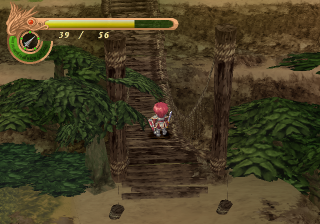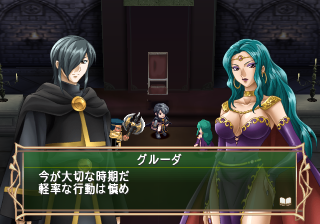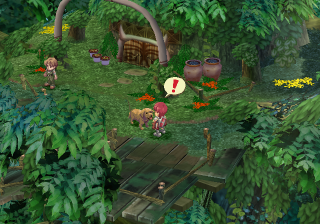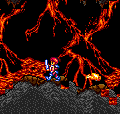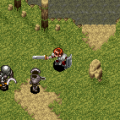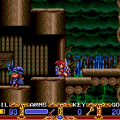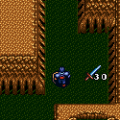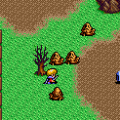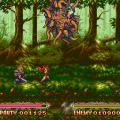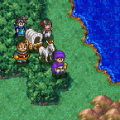- Ys Book I & II
- Ys III: Wanderers from Ys
- Ys IV: Dawn of Ys / Mask of the Sun
- Ys V: Ushinawareta Suna no Miyako Kefin
- Ys VI: The Ark of Napishtim
- Ys: The Oath in Felghana
- Ys Origin
- Ys Seven
- Ys: Memories of Celceta
- Ys VIII: Lacrimosa of Dana
- Lacrimosa of Dana (Novel)
- Ys IX: Monstrum Nox
- Ys Strategy
- Ys: The Call of Solum
- Ys vs. Sora no Kiseki: Alternative Saga
- Ys (Anime)
The Story of the Ys IVs
There are four different versions of Ys IV, all from different developers, with drastically different gameplay but similar stories. The reasons behind this are somewhat confusing.
It begins with Hudson, who published the PC Engine/TurboGrafx-16 ports of Ys I-III. These titles were very successful, and so Hudson approached Falcom about creating a sequel for their console. Unfortunately, a substantial number of staff had quit from Falcom, and the company lacked the resources to develop it themselves. Unable to even provide a full script, they created a loose framework of a scenario and supplied the music, while Hudson went on their own way to develop the game. This version is subtitled Dawn of Ys.
Since Falcom had a basic game design document, they also pitched the ideas to other developers to create versions for the other 16-bit consoles. Tonkin House, who developed the SFC/SNES port of Ys III, was drafted to develop the Super Famicom port of the game. This version is subtitled Mask of the Sun.
At that time, Falcom had also entered in a partnership with Sega to port some of their titles to the Mega Drive. Sega began work on their own version, but this version was cancelled before it got too far into development. Nothing was every shown publicly of this title, other than revealing that it was also to be subtitled Mask of the Sun. Other games that came out of the Sega-Falcom partnership were Mega Drive ports of Sorcerian, Lord Monarch and Dragon Slayer, and the Mega/Sega CD version of Popful Mail. At one point, Mantra in Korea wanted to give Ys IV the Ys II Special treatment, but that went nowhere, too.
As a result, this is the first Ys chapter developed specifically for consoles – there is no PC release, though an emulated version of the Super Famicom version was included several years later in assorted compilations. However, Falcom did release a soundtrack album called Ys IV JDK Special, which features several songs from the game done using the FM synth of the PC-88.
When the two Ys IV titles first came out, Dawn of Ys for the PC Engine was considered the canonical version, since it began development first and sprang from Hudson’s proposal. However, in 2003 when Falcom published a chronology of the Ys timeline when Ys VI was released, they instead nominated Mask of the Sun for the Super Famicom as the officially recognized title. The rationale was that the SFC game was closer to the original development document than the PC Engine game, which strayed significantly from Falcom’s plans. This is generally considered rather odd, considered Dawn of Ys is a substantially better game than Mask of the Sun.
In 2005, Taito began porting and publishing remakes of Ys III, IV and V to the PlayStation 2. While based on Mask of the Sun, it also takes some substantial liberties with the plotline, and the gameplay systems are also completely different. As a result, this version is subtitled Mask of the Sun: A New Theory.
Finally, in 2012, Falcom developed and published their own remake of the Ys IV storyline for the PS Vita. Subtitled Celceta no Jukai (“Foliage Ocean in Celceta”) in Japan, and renamed Memories of Celceta for the English release, it once again completely reworks the storyline, adding a number of additional characters and basing the gameplay systems on Ys Seven. Since this was the only version of Ys IV (in a manner) that was actually developed by Falcom, this replaced Mask in the Sun in the series canon.
So if all four of these games are so different, then what do they have in common? They all take place in Celceta, a land thick with forests, and the home of a special healing plant which is found in the other Ys games. In all of the Ys IV games, there’s a town that lies in the trees. Many of the towns have the same names, including Promalock, Kasnan, Selray, Komodo and Highland, except for Dawn of Ys, which changes almost all of them. The core cast members are mostly the same, though occasionally they are placed in different roles. The storyline delves into the history of the Eldeel, a winged race from ages beyond, who Feena and Reah from the earlier Ys games are revealed to be part of. The game also introduces the Romn Empire, an army from the country of Romun, who are occasionally a thorn in Adol’s side. And all versions revolve around two artifacts known as the Mask of the Sun and the Mask of the Moon. The soundtrack also uses much of the same music, though the tracks are used in different areas, and there are some songs unique to each game, too.
Common Characters
Karna
Karna offsets the whole “damsel in distress” thing Ys has had going for it, seeing as she’s a totally competent, independent fighter. She saves Adol from the evil Romun Empire at the beginning in Dawn of Ys, and even fights beside him for a while. She disappears after that, except for communicating through carrier pigeon. In the Mask of the Sun games, her involvement in the action is more punctual, but she remains a steady force throughout the game, commanding her men to keep hostile forces off Adol’s back. In Memories of Celceta, her role has been recast from a sword fighter to an archer, and is the daughter of the village chief of Komodo.
Duren
In most versions of Ys IV, Duren is a minor character, who acts as an informant. He shares a cell with Adol in the early parts of the game. His role was drastically expanded for Memories of Celceta, where he acts as Adol’s companion through most of the game, taking on the role that Dogi plays in other games.
Dr. Flair
Dr. Flair already was a minor character in Ys II, as the doctor who instructed Adol to get the ingredients for the cure to save Lilia. He plays an important role at the beginning in both versions of Mask of the Sun, where he travels around with Adol and busts him out of the Romun prison. In Dawn of Ys he appears only later, and plays a similarly small part as he did in Ys II. He is only briefly mentioned in Memories of Celceta.
Lefance
The long dead national hero of Celceta, who was once friends with Eldeel. In Dawn of Ys and the Mask of the Sun games he appears to Adol in shrines. He and his followers offer Adol their guidance and magical power, to help him fend off the new threat for the country. In Memories of Celceta, the heroes must collect his scattered memories to similar ends.
Remnos
A fairly minor character in Dawn of Ys, Remnos lives in the town of Arieda, the same as Karna. He’s the first kidnapping victim, who Adol must rescue. He plays a slightly larger role in Memories of Celceta, having been changed into the brother of Karna, and both are children of the chief of Komodo.
Gadis
One of the three mysterious figures who pull the strings behind the curtains of the Romun invasion into Celceta. His appearance – and the fact that he always carries around his battle axe, at least in Mask of the Sun – should leave no question that he is the brute of the operation. Sometimes translated as Gadeis.
Bami
This pink-haired temptress travels along with the two other psychotic companions, Gruda and Gadis. Her more refined tastes often put her at odds with Gadis. Like most evil dominatrix types, she’s got quite the bust line and a skimpy outfit built specifically for showing it off. Some translations spell her name as Bammy.
Eldeel
A winged being from an ancient, mostly extinct race known as the Eldeen, he is revered as a god by the humans around him. Depending on the game, he seems benevolent at times, but alternatively seeks to destroy mankind.
Ys IV: The Dawn of Ys (イースIV: ザ ドーン オブ イース) – PC Engine CD (December 22, 1993)
Having offended so very many fans with the departure in Ys III, Falcom went back to the standard overhead formula for Ys IV. If it were canon, the story takes place after Ys III in the series timeline, whereas in all of the other versions, it takes place before. The gameplay is pretty much the same, although parts of it have been fine tuned. The PC Engine version of the first games used a “Slow/Fast” option setting to determine the speed, while Ys IV removes this feature and puts the speed at somewhere in between. However, the fighting is much smoother, partially because Adol can finally move diagonally. The rings from Ys III return, but also the magic system from Ys II is reused in this version, so Adol can once again gain wands to toss fireballs and turn himself into a Roo. New is the Freeze spell that can paralyze enemies for a short moment and, more importantly, makes them extremely vulnerable during that time. Also new is the Seeker spell, which essentially replaces the Mask of Eyes from the first game, without that item’s drawback of invisible enemies.
At first glance, the graphics barely look any better than the TurboGrafx-16 version of Ys Book I & II, but there’s a lot more detail in the backgrounds, which becomes apparent as you get further into the game. The character designs are also much better, and cutscenes appear with more frequency. Whenever a character talks, there’s a gigantic portrait with lip-synched speech, and the history of Celceta is fleshed out with elaborate full screen pictures, which is probably why Ys IV requires the Super CD-ROM card rather than the standard card of its predecessors. The visual improvement is welcome because the plot is intertwined more heavily with this game than any of its forebears. It’s also a much longer game, requiring more playtime than the first two games put together.
In returning to the usual overhead perspective, there are a lot of references back to the original game – while Adol begins in the town of Minea, he quickly sets sail to uncover the mysteries of the country of Celceta. This is not without some detours to meet old friends – Lilia is back, as is Dogi – and revisit old locations. You get to fight through Darm Tower again, although thankfully not all of it. Most of the areas are connected by the fields and forests of Celceta. The dungeon design is similar to the old games, with a few new twists, like the moving sands in the deserts, or the Torie Shrine – also known as the fan-dubbed “Escher” dungeon – a rather confusing area where warp tiles will attempt to disorient you by turning the screen upside down or placing you on walls.
Characters
The awesome Ys music fans have come to know and love is back, once again arranged by Ryo Yonemitsu, although there’s less of the action paced songs and more slower paced tracks. Some of them are backed with a jazzy saxophone, which doesn’t always feel appropriate when paired with the high powered synth. The soundtrack is quite expansive, but this actually ends up being kind of a bummer, because a large number of songs are played through the PC Engine’s weak sound chip. There’s also a lot more voice acting, even though it’s in scratchy PCM. Before the release of this game, Falcom published three Ys IV Perfect Collection CDs which contain the full soundtrack, although some tracks are slightly different.
Everything that the original two games did, Ys IV does better – better graphics, more involved dungeon layouts, some incredibly cool boss battles, more events, and just all around more awesomeness. It’s a substantially longer, more involved game than before, but never to the point where it wears out its welcome. Many fans consider this one of the best action-RPGs on the PC Engine, and certainly the best of the earlier Ys games. Luckily, it’s been translated into English, and even fan-dubbed for the voiced cutscenes, which don’t feature any subtitles in the original.
Screenshots
Ys IV: Mask of the Sun (イースIV: マスク オブ ザ サン) – Super Famicom (November 19, 1993)
Ys IV for the Super Famicom (dubbed Mask of the Sun) begins when Adol finds a letter from Luta Gemma (the guy from Darm Tower in the original Ys), begging for him to come to the land of Celceta. This differs from the PC Engine version, where Adol visited Minea and was instructed to visit Celceta by the fortune teller. Beyond this, the sequence of events are somewhat similar – Adol travels to the port town of Promalock, where he gets locked up a similar manner, he meets Karna, and so forth. He also gets to see Minea again later on, reunite with Lilia, and even revisit Lance Village from Ys II, although Darm Tower remains closed in this version.
Apparently the designers of this version really enjoyed the old computer versions of Ys, because Adol really has to be precisely on target when attacking. Thankfully, he can take quite a bit of damage before dying. In place of dedicated magic spells, the stronger swords in the game have different special powers, mostly different projectiles but also a healing spell. Unfortunately, Adol cannot walk diagonally, which does make combat feel stilted and frustrating once again. And whoever decided to introduce the concept of poison to an Ys game should be kicked furiously.
The game also suffers in a number of other areas. Part of this was due to a rushed development schedule, in order to beat the PC Engine version to the market. The smaller amount of storage space also contributes to the problem. The visuals in Mask of the Sun can’t compare at all to the PC Engine version, as they’re darker and not nearly as aesthetically pleasing. There’s a near total lack of cutscenes, and there aren’t any character portraits at all, even in the shops.
At least the music holds up admirably. There are some bizarre sound samples, particularly an obnoxious trumpet noise, but the electric guitar sounds nice, making it somewhat similar to a Mega Man X soundtrack. Some of the slower songs from Dawn of Ys are also present with a faster tempo. The title theme music is completely original to this version, and is a pretty decent song.
While Mask of the Sun isn’t a terrible game in its own right, it’s always stood in the shadow of the superior version on the PC Engine. Beyond the obvious visual and aural downgrades, its boss battles aren’t as cool, the dungeons are less interesting, the actual fighting is certainly a bit more annoying, and the whole game just feels more watered down than it should be.
Screenshots
Ys IV: Mask of the Sun – a new theory – (イースIV: マスク オブ ザ サン – a new theory -) – PlayStation 2, Mobile (May 26, 2005)
The plot of Taito’s PlayStation 2 remake of Mask of the Sun is loosely based off the Super Famicom game, although there are plenty of variations and tangents to make A New Theory a unique experience.
For instance, Adol now has to fight a boss after he is imprisoned by the Romun’s, while there no longer is anything to fight in the crater. The order of events is mostly the same, but there are plenty of differences here and there. For example, the whole episode of going back to Esteria from the first two games has been excised. Adol also first meets Eldeel on seemingly friendly terms, before he shows his true face. The new character artwork is pretty nice, although the intro, showing various locations of the game along with portraits, is pretty awful compared to the PC Engine game. There’s almost nothing in the way of animated cutscenes either.
Characters
From a gameplay and presentation perspective, attempts to pattern itself after Ys VI: The Ark of Napishtim, with its 3D backgrounds and 2D sprites. Unfortunately, it doesn’t quite work. For starters, the graphics have a very low budget feel. While there are occasionally some interesting scenery – some of the towns in particular look kind of cool – the dungeons are long, repetitive exercises in frustration. Almost all of them are poorly designed, with almost no variation in textures and layout. Furthermore, they’re full of invisible boundaries and objects that block the characters from view, allowing enemies to get easy hits.
It gets even more aggravating when it’s time to backtrack through huge stretches of these boring areas. Adol doesn’t walk very fast and controls rather sluggishly. He no longer needs to ram into your enemies, and instead has three different strengths of sword attacks. The magic system has changed and Adol now wields elemental swords, which can be used to summon orbs. These orbs have a variety of offensive and defensive capabilities, activated via the three attack buttons. Like the Ys III PlayStation 2 remake, the music is rather disappointing, with average arrangements and weak instrumentation that butchers an otherwise excellent soundtrack. The soundtrack is a step up from the SFC game, but can’t touch the PC Engine version.
Overall, A New Theory is a disappointing, sloppy excuse of a remake, and can really only be recommended to the die-hard fans, as both of the other versions of Ys IV are superior – and in the case of the relatively mediocre SFC game, that’s saying quite a bit.
Taito soon had this version of Ys IV ported to Japanese mobile phones as well. The job was done by Arc System Works, and looks to be the same game with massively downgraded graphics.
